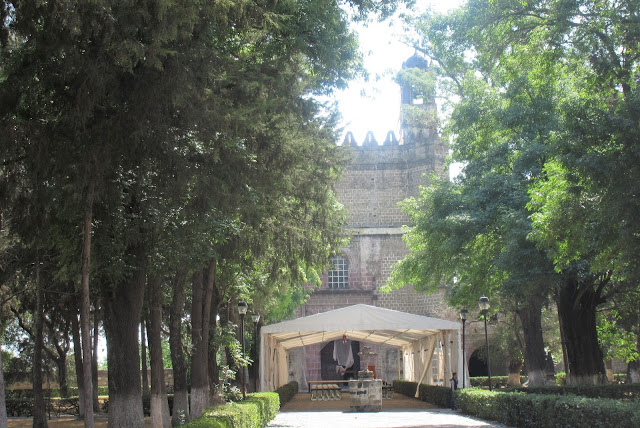March 18, 2018
After our three days in the Villahermosa area, we flew back to Mexico City and took an Uber back to the Maria Cristina Hotel, the same place we had stayed in before going on our side trip, arriving after midnight.
Arnold Pedroza picked us up the following morning for a trip south.
Our first stop was the city of Heujotzingo, population about 60,000 and best known for the Franciscan monastery San Miguel Arcangel, founded in 1525. San Miguel Arcangel, whom we know as the Archangel Michael, is the patron saint of the city and vicinity. This building, finished in 1570, was the third one built on this site and is one of the fourteen monasteries around the base of the volcano Popocatepetl that together have been declared a UNESCO World Heritage Site.
You can see the monasteries marked on the map below. Heujotzingo/San Miguel Arcangel is in the top right quadrant.
The monastery is almost 450 years old--that is a long time for a brick structure to survive in earthquake country. One article I read about the monastery complex noted that it was in great shape and had never been severely damaged by any of the frequent earthquakes in the area. I'm guessing that either that article has not been updated since the 7.1 earthquake that hit just south of Huejotzingo in 2017, or the author of the article didn't consider the damage done by the earthquake to be very significant.































